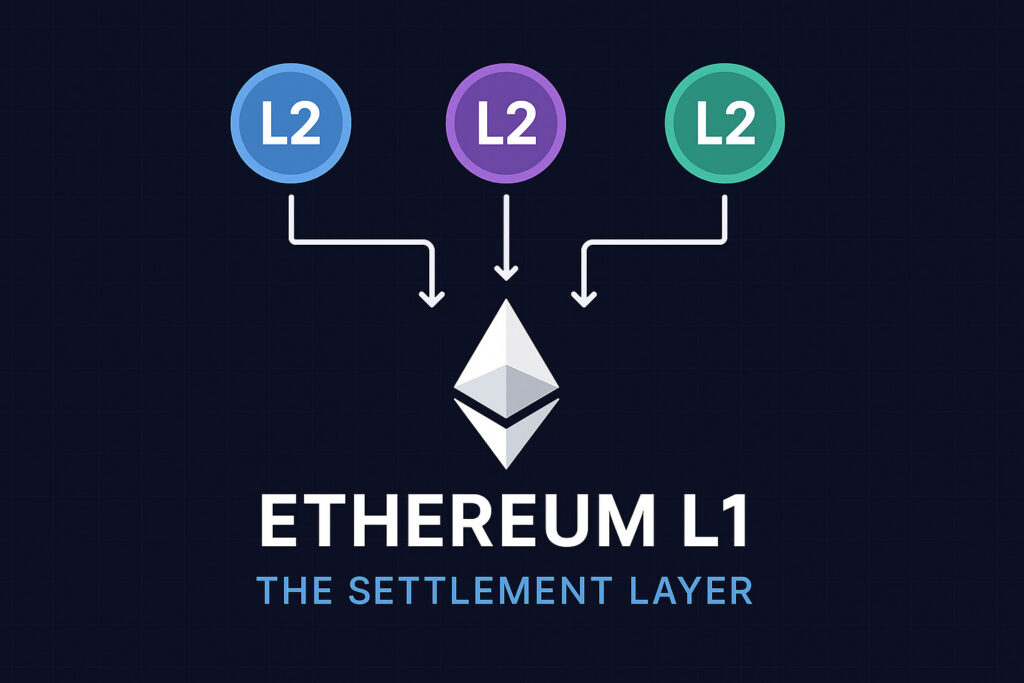Ethereum Layer 1 (L1) is evolving into the backbone of decentralized finance (DeFi) and global blockchain activity. Even as Layer 2 (L2) networks rise to meet the demand for faster and cheaper transactions, Ethereum’s base layer continues to serve as the ultimate destination for final settlement. Its security, decentralization, and immutability ensure that all activity across the Ethereum ecosystem ultimately finds a permanent and trustless home.

Ethereum L1 as the Global Settlement Layer
Ethereum’s primary blockchain is designed to be more than just a network for token transfers or smart contracts. It operates as a digital settlement engine where all critical transactions are finalized. Whether it involves large-scale DeFi trades, NFT transfers, or the execution of high-value smart contracts, Ethereum L1 acts as the layer of record. This means that even if activity occurs on faster, more cost-efficient networks, the final state is validated and secured on Ethereum’s main chain.
This function mirrors the way traditional financial systems operate. Just as central clearinghouses provide final reconciliation for banking transactions, Ethereum L1 delivers the cryptographic guarantees that make blockchain-based finance possible on a global scale.
L2 Networks as Execution and Authorization Layers
Layer 2 networks such as Arbitrum, Optimism, and zkSync have become essential to Ethereum’s growth. These networks process thousands of transactions per second at a fraction of the cost of L1, acting as “execution layers” or “authorization networks.” They enable rapid activity and lower fees, but their operations ultimately depend on Ethereum’s base layer for final confirmation.
This relationship allows L2s to focus on speed and scalability while Ethereum L1 provides the final, immutable proof of ownership and value. Even if an L2 network encounters technical challenges, the Ethereum mainnet ensures that assets remain secure and transactions remain valid.
DeFi’s Dependence on Ethereum Settlement
The decentralized finance ecosystem relies heavily on this layered structure. Billions of dollars flow through decentralized exchanges, lending platforms, and on-chain derivatives every day. Investors, developers, and institutions trust Ethereum’s L1 to safeguard the integrity of these transactions. Upgrades such as proto-danksharding and more efficient rollup technology will strengthen this role by improving scalability without compromising decentralization.
What’s Coming Up?
As crypto adoption expands, Ethereum is poised to remain the ultimate settlement hub for digital assets. L2 networks will continue to provide speed and accessibility, but the final authority rests with Ethereum Layer 1. Its ability to secure and validate global financial activity makes it not just a blockchain, but the foundation for a decentralized digital economy.
